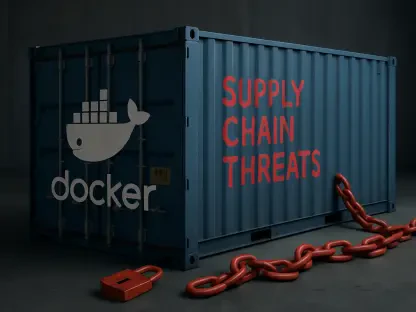Introduction
A single regulatory shift has turned tax operations into a high-frequency, data-intensive discipline where missed handoffs, opaque workflows, and scattered ownership translate directly into filing risk and cost overruns, and that pressure has made the choice of operating model as consequential as the choice of software. Pillar Two sharpened this reality by compressing timelines and multiplying jurisdictional nuances, forcing corporate tax teams to scale capabilities without ballooning headcount. The market response has been clear: cloud-enabled co-sourcing, anchored by a shared platform and a curated mix of partners, is displacing monolithic outsourcing as the default.
This analysis examines why the ecosystem model has gained momentum, how it changes cost and risk profiles, and where value concentrates as guidance evolves. It evaluates operational traits that separate successful adopters from laggards, outlines near-term technology and talent dynamics, and projects how these forces steer budget allocation and vendor selection. The goal is practical: map the market shift so leaders can align investments with compliance needs while building enduring advantage.
Moreover, the discussion translates abstract strategy into execution realities. It explores the nature of work under Pillar Two—data origination, validations, modeling, review—and shows how a platform-first approach creates a single source of truth that partners can use without diluting governance. The result is not only faster filings but a continuous capability that feeds planning, provisioning, and disclosure with reliable data.
Body
Market Drivers: From Closed Pipelines To Shared Platforms
The first driver is regulatory velocity. Pillar Two demands recurring modeling, safe harbor tests, and jurisdictional filings that rely on granular, standardized inputs. Traditional outsourcing, optimized for periodic deliverables and provider-owned tooling, struggles with the cadence and transparency required. By contrast, a co-sourced ecosystem routes all work through a company-controlled cloud backbone with role-based access, immutable audit trails, and real-time status. That architecture shortens cycle times and reduces follow-ups because every party works from identical datasets and lineage.
The second driver is talent scarcity. Building every specialty in-house—data engineering for ERP mapping, GloBE logic maintenance, filing localization—proved impractical. Ecosystems solve this by segmenting the work: regulatory interpretation sits with one advisor, data pipelines with another, model validations with a third. Because the platform enforces standards, contributions interlock instead of collide. That modularity changes fixed cost into variable capacity while preserving institutional memory inside the company’s environment.
A third driver is continuity risk. In closed-provider models, histories and workpapers often remain on the vendor’s systems, making transitions painful. Ecosystems reverse that exposure. Data, templates, controls, and process telemetry persist on the corporate platform, so changing a partner does not reset the knowledge base. The market has priced this continuity into decisions: buyers favor solutions that guarantee access independent of any single vendor, and providers that integrate cleanly into client-controlled stacks win more mandates.
Competitive Dynamics: Best-Of-Breed Beats One-Size-Fits-All
In procurement, selection criteria shifted from “one firm delivers end-to-end” to “multiple specialists plug into a unified workflow.” Advisory firms that pair interpretation with platform fluency gained ground, as did implementation partners that can translate ERP realities into standardized tax models. Data vendors that offer connectors, quality rules, and reconciliation dashboards now compete on time-to-value rather than breadth of services. The winning pitch emphasizes transparent handoffs, measurable service levels, and clear decision rights aligned to risk appetite.
This dynamic also rebalances negotiating power. When a company owns the operating platform, partner contracts become modular and performance-based. Work can be reallocated without destabilizing the core process, which disciplines pricing and raises service quality. The result is a healthier market: providers focus on comparative strengths, while corporates avoid vendor lock-in and reduce switching costs.
Industry context matters. Asset-light tech groups often move fastest because their data estates are already standardized. Industrial conglomerates progress in phases, beginning with safe harbor assessments and gradually expanding to full GloBE calculations as data harmonization matures. Financial services players emphasize control evidence and auditability, given heightened regulatory scrutiny. In each case, the ecosystem approach adapts to sector-specific constraints while retaining a consistent platform foundation.
Pillar Two As Catalyst: Where Value Concentrates
Pillar Two concentrates value in three zones. First, data origination and quality: mapping chart-of-accounts to standardized tax concepts, enriching entity hierarchies, and automating currency conversions drive downstream accuracy. Second, computational reliability: maintaining GloBE logic with jurisdictional nuances and safe harbor conditions requires governance and version control that general-purpose spreadsheets cannot provide. Third, review and assurance: shared evidence, annotations, and exception workflows enable faster close and clearer sign-offs across tax, controllership, and legal.
Misconceptions have faded as programs scale. Co-sourcing is not a loss of control; it formalizes control by placing data stewardship and workflow ownership with the company. Nor is it operationally heavier; the platform reduces coordination costs by eliminating duplicative reconciliations and manual status checks. The payoff appears beyond compliance: scenario modeling for capital allocation, market entry, and supply chain shifts becomes more credible when anchored to the same governed tax data.
Performance metrics validate the shift. Organizations report shorter cycle times when status monitors, audit trails, and policy-as-code checks run natively in the platform. Error rates fall as standardized validations catch anomalies at ingestion. Filing timeliness improves because reviews occur on evidence with clear lineage. These outcomes typically persist across partner changes, underscoring that the platform—not any single vendor—is the durable asset.
Technology And Economics: What Shapes The Next Curve
The stack trends toward modular, API-first design. Companies link tax engines to ERP, consolidation, and disclosure systems to achieve end-to-end traceability. Data contracts define what “good” looks like at each interface, while workflow engines orchestrate tasks, escalations, and approvals. AI augments this layer by classifying data, flagging anomalies, and drafting narratives, but delivers value only when trained on high-quality, governed inputs.
Economically, budgets tilt toward platform build-out and data engineering, with external advisory spend targeted to complex interpretation and review. Headcount growth slows as variable partner capacity fills peaks. Contracts adopt outcome-based measures—cycle time, data completeness, rework—rather than hours alone. This realignment creates a clearer link between spend and compliance risk reduction.
Regulatory momentum sustains demand. As safe harbors phase and jurisdictions refine guidance, programs that embedded adaptability outperform. Companies with modular contracts and standardized workflows reconfigure faster, avoiding expensive rebuilds. The market signal is consistent: invest in foundations that welcome change, not custom builds that resist it.
Conclusion
This market favored ecosystems anchored by client-controlled platforms because that model compressed timelines, improved transparency, and retained institutional knowledge. Competitive dynamics rewarded best-of-breed players that integrated cleanly and accepted modular scopes, while corporates reduced lock-in and gained pricing leverage. Pillar Two served as the catalyst that revealed the limits of monolithic outsourcing and the strengths of shared-data collaboration across tax, finance, and legal.
Strategically, the next steps were practical and measurable. Leaders prioritized platform ownership, standardized data models, and clear decision rights; selected complementary partners comfortable operating inside client environments; and tied contracts to outcomes like error rates and filing timeliness. Investments shifted toward data quality, workflow orchestration, and versioned logic, with advisory capacity applied at the points of highest interpretive risk. By treating tax as a governed, platform-enabled process rather than a sequence of provider deliverables, organizations unlocked resilience, reduced rework, and positioned compliance as a source of agility rather than a drag on growth.









